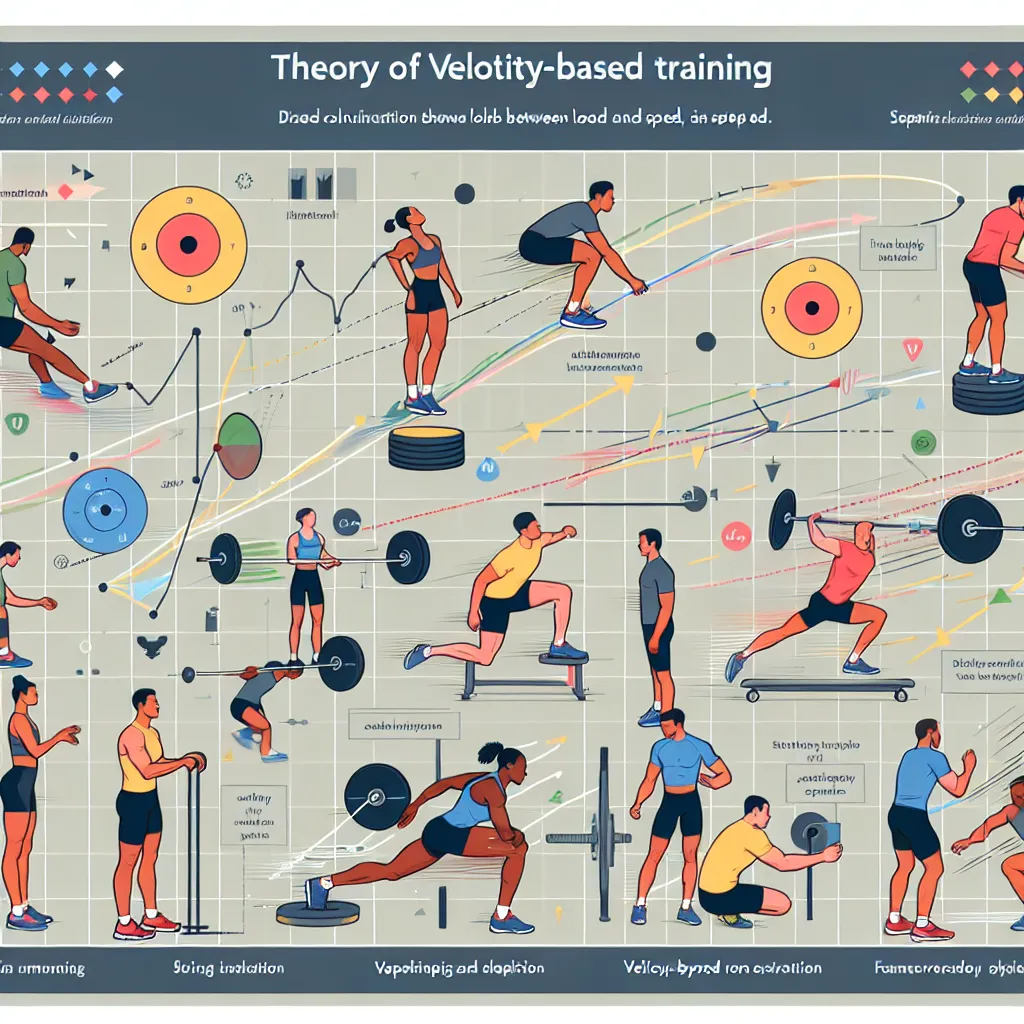Velocity-based training (VBT) is a cutting-edge approach in sports science that has gained significant attention in recent years. As an IELTS candidate, understanding this concept can not only enhance your fitness knowledge but also expand your English vocabulary. Let’s delve into the world of VBT and explore how it can benefit both your physical performance and language skills.
Definition and Pronunciation
Velocity-based training (noun) /vəˈlɒsəti beɪst ˈtreɪnɪŋ/: A method of strength training that uses the speed of movement to determine the optimal load and volume for each exercise.

Context and Usage Examples
Velocity-based training is primarily used in sports and fitness contexts. Here are some examples to illustrate its usage:
-
“The coach implemented velocity-based training to optimize the athletes’ power output during weightlifting sessions.”
Analysis: This sentence demonstrates how VBT is applied in a professional sports setting to improve performance. -
“By utilizing velocity-based training, amateur lifters can prevent overtraining and reduce the risk of injury.”
Analysis: This example highlights the benefits of VBT for non-professional athletes, emphasizing safety and efficiency. -
“The latest research on velocity-based training suggests it can significantly enhance an athlete’s explosive power and speed.”
Analysis: Here, we see how VBT is discussed in scientific contexts, linking it to specific performance outcomes. -
“The gym’s new velocity-based training system uses sensors to provide real-time feedback on lifting speed.”
Analysis: This sentence introduces the technological aspect of VBT, showing how it’s implemented in modern gym equipment. -
“Incorporating velocity-based training into your routine can help you break through strength plateaus more effectively.”
Analysis: This example demonstrates how VBT can be recommended as a solution to common training challenges.
Frequency in IELTS
While “velocity-based training” itself may not appear frequently in IELTS exams, related vocabulary and concepts from sports science and fitness are common in Reading and Listening sections. Understanding VBT can help you tackle questions about exercise, athletics, and performance optimization.
Vocabulary Analysis
Word Structure
- Velocity (noun): Speed of movement
- Based (adjective): Founded on or derived from
- Training (noun): The action of teaching or developing skills
Synonyms and Antonyms
Synonyms:
- Speed-based training /spiːd beɪst ˈtreɪnɪŋ/
- Velocity-dependent exercise /vəˈlɒsəti dɪˈpendənt ˈeksəsaɪz/
- Movement velocity training /ˈmuːvmənt vəˈlɒsəti ˈtreɪnɪŋ/
Antonyms:
- Static training /ˈstætɪk ˈtreɪnɪŋ/
- Isometric exercise /ˌaɪsəʊˈmetrɪk ˈeksəsaɪz/
- Fixed-load training /fɪkst ləʊd ˈtreɪnɪŋ/
Memorization Techniques
Mind Map
Create a mind map with “Velocity-Based Training” at the center, branching out to related concepts such as:
- Equipment (e.g., linear position transducers, accelerometers)
- Benefits (e.g., power optimization, injury prevention)
- Applications (e.g., weightlifting, sprinting, team sports)
- Key terms (e.g., force-velocity curve, power output)
Mnemonic Device
Remember VBT with this phrase: “Velocity Boosts Training”
- V: Velocity (speed of movement)
- B: Boosts (enhances performance)
- T: Training (exercise regimen)
Practice Exercises
-
Gap-fill exercise:
“The athlete’s ____ (velocity-based) training program helped improve her ____ (explosive) power in just six weeks.” -
Sentence formation:
Create a sentence using “velocity-based training” and at least two of its synonyms or related terms. -
IELTS-style paragraph writing:
Write a short paragraph (40-50 words) explaining the benefits of velocity-based training for professional athletes. Use appropriate linking words and maintain coherence. -
Vocabulary expansion:
List five additional terms related to sports science or fitness that you might encounter in an IELTS Reading passage about velocity-based training. -
Listening practice:
Listen to a short lecture on velocity-based training and take notes on the key points. Then, summarize the lecture in your own words, using the vocabulary you’ve learned.
Conclusion
Mastering the concept and vocabulary of velocity-based training can significantly enhance your IELTS performance, especially in topics related to sports, fitness, and technology. By understanding this advanced training method, you’ve not only expanded your lexical resource but also gained valuable knowledge that can be applied to various sections of the IELTS exam.
Remember to practice using these new terms in context, whether in speaking exercises or writing tasks. The more you engage with this vocabulary, the more natural and confident your language use will become. Don’t hesitate to explore related concepts in sports science to further broaden your vocabulary and knowledge base.
We encourage you to share your experiences with learning and using this new vocabulary in the comments section below. Have you encountered similar terms in your IELTS preparation? How do you plan to incorporate velocity-based training vocabulary into your study routine? Your insights could be valuable to other learners on the same journey!